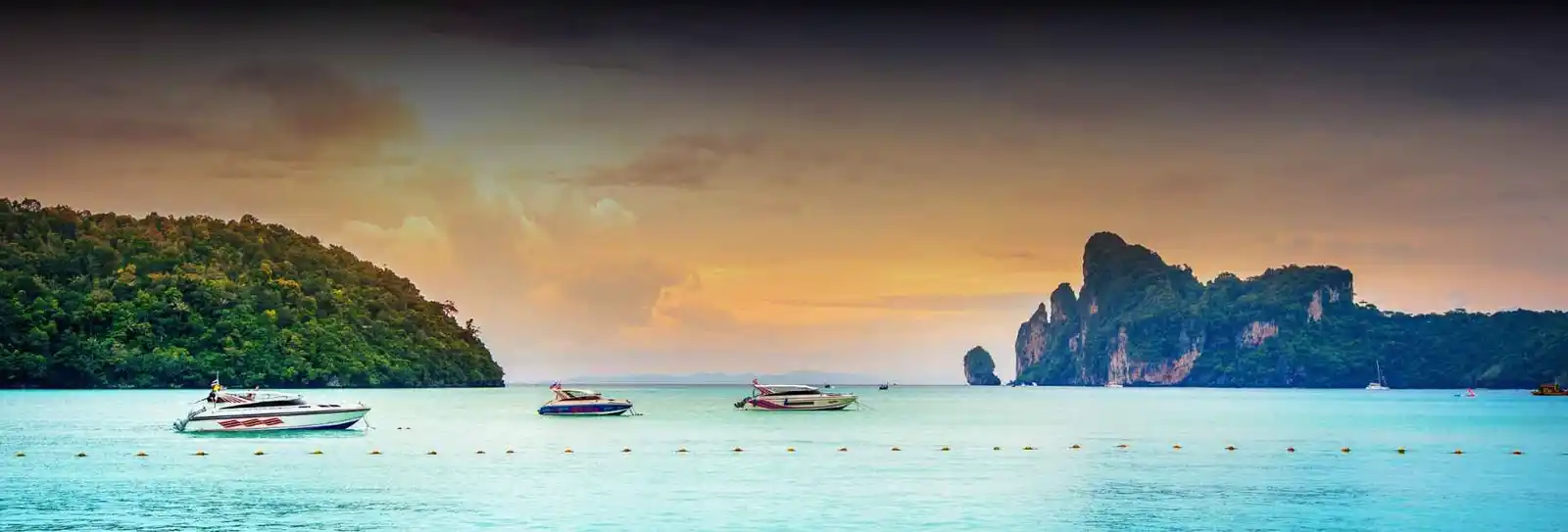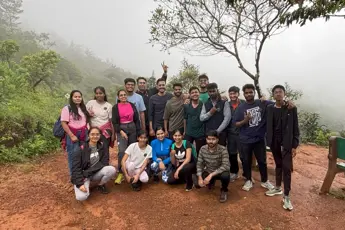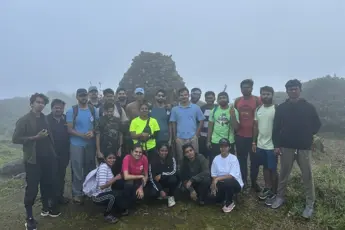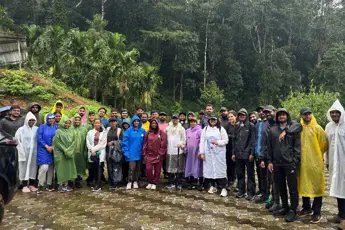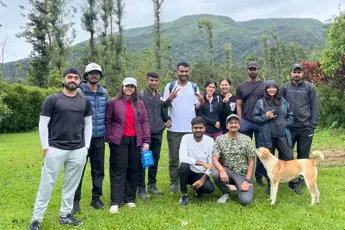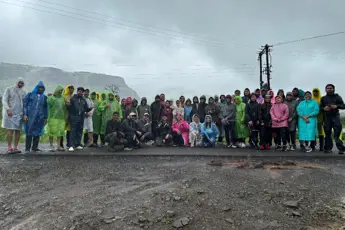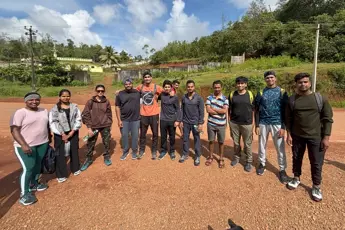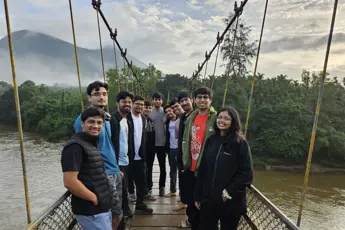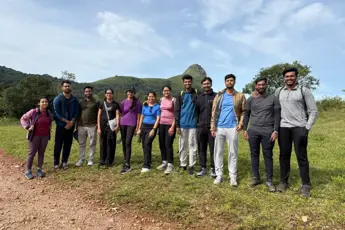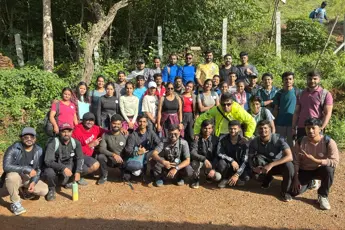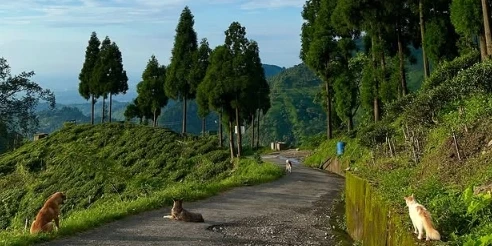
Cosily located at the foot of the Himalayas, Darjeeling is one of the charming hill stations renowned for its rolling tea gardens, colonial atmosphere, and scenically-completed views of snow-covered peaks of Kanchenjunga. To move in this "Queen of the Hills" is to be surrounded by nature in harmony as green-dotting tea gardens roll over rolling hills, revealing a peaceful and scenic landscape. These world-famous tea gardens offer not only the finest of Darjeeling tea but also guided tours whereby one catches a glimpse of the minute process of tea making from plucking small leaves to withering, rolling, fermentation, and drying. Visits to tea estates like Happy Valley, Makaibari, and Glenburn give one an idea of the detail with which every place is designed, as one smells the scented leaves blown along on the hilltop breeze. While tea gardens, Darjeeling, are visited by tourists who visit them because of their rugged landscape and colonial past. Darjeeling Himalayan Railway, a World Heritage location, is a vintage experience in misty forests, picturesque valleys, and sleepy villages.Tiger Hill sunrise is a destination one cannot miss, sun rays at dawn bathing the snow-covered peaks of the Kanchenjunga range in gold. Botanical gardens, monasteries such as Ghoom, and sites such as Batasia Loop make the town a destination worth visiting. The Tibetan, Nepali, and British cultural heritage of the town makes Darjeeling a rich cultural experience of warm hospitality and colourful local bazaars. As a nature lover, a photographer, or a pilgrim of peace in the embrace of the mountains, a visit to the tea gardens and natural splendour of Darjeeling is an enriching and unforgettable journey to the very heart of India's Himalayan heritage. From foggy paths to scented tea estates, Darjeeling is a timeless, dreamy place that weaves charm, culture, and tranquillity into every step.History of DarjeelingDarjeeling's past is as thick and green as its emerald mountains. Forming part of the Sikkim Kingdom, the region was originally populated by the Lepchas, a contented native people, then came the Gorkhas from Nepal and the Bhutanese. In the early 19th century, Darjeeling was held by the British East India Company after a series of political settlements and wars. The British saw its strategic location and good climate and made Darjeeling a hill station during the 1830s, primarily as a sanatorium for British officers who wanted to leave the Indian plains behind. Darjeeling began to develop in the mid-19th century. The British started tea cultivation in the 1850s by exploiting the high altitude, good climate, and good soil of the region. This marked the start of the Darjeeling tea business world all over the world, as plantation bungalows like Makaibari became a household name during a subsequent period. Apart from the sole exception of tea, the construction of the Darjeeling Himalayan Railway in the 1880s further opened up the region and propelled its growth at a fast rate.The "Toy Train", which was originally a hill railway, remained a UNESCO World Heritage Site because of its historical and engineering significance. Darjeeling turned into a hub of education, as all types of missionary schools and colleges turned it into a destination and received admissions from kids from the whole subcontinent. The area turned multicultural with time because it had an already established presence of Tibetans, Nepalis, Bengalis, and the British. When India became independent in 1947, Darjeeling was still a tourist destination with the flavour of social and political change, as with the Gorkhaland movement. And yet Darjeeling today is still a unique blend of colonial past, multicultural diversity, and natural scenery, all the result of the complex but intriguing historical past that forged its mythic status as the "Queen of the Hills."Places to visit near DarjeelingMirik: About 49 km from Darjeeling is the serene hill town of Mirik, famous for picturesque Sumendu Lake in pine woods and an orange garden. Ideal for a day outing or serene retreat, Mirik offers boating at the lake, walking across the scenic footbridge, and a visit to the tea garden and monastery. Off season, with good weather and minimal tourists, it's a good retreat from the Darjeeling tourist hordes.Kalimpong: 51 km from Darjeeling, Kalimpong is a hill resort renowned for Buddhist monasteries, colonial heritage structures, and flower nurseries. Leisurely ambience, bird's-eye view of the Teesta Valley, and places such as Zang Dhok Palri Phodang Monastery and Deolo Hill put Kalimpong at the top of your list. Kalimpong is also famous for local handicrafts and bazars.Kurseong: Also referred to as the "Land of White Orchids," Kurseong is about 30 km from Darjeeling and renowned for its calm climate and tea plantations. It's dotted with the British-era schools, views like Eagle's Craig, and peaceful trekking paths. With its salubrious climate and natural charm, it's a hit among nature enthusiasts and potential brides.Sandakphu: Adventure sport enthusiasts will find Sandakphu, West Bengal's highest point, some 58 km from Darjeeling. It offers majestic sights of the world's highest peaks, Everest, Kanchenjunga, Lhotse, and Makalu. Sandakphu is reachable on a trek or a 4x4, and it's a photographer’s and trekkers' paradise to view the grandeur of the Himalayas.Lepchajagat: Lepchajagat, 19 km from Darjeeling, is a remote hideaway of quiet woods, bird songs, and Kanchenjunga vistas. It's a peaceful village that offers a respite from the din of commercialised tourism. With friendly homestays and overnight stays of rural vistas, it's a honeymooners' and loner-hunters' paradise as well.Best Time to Visit DarjeelingSpring (March to May): Spring is a good time to travel to Darjeeling. Spring seasons are soft and gentle with temperatures ranging from 10°C to 20°C, which is perfect for taking a sightseeing tour and engaging in outdoor activities. Tea gardens with blooms and rhododendron, and magnolia, flowering color hill slopes. Blue spring sky also offers a glimpse of the panoramic snow-white Kanchenjunga peaks.Autumn (September to November): The Autumn season is also okay to travel to Darjeeling, by the way. Monsoons subside in early September, and landscapes are uncluttered, green, and fresh. The temperature is between 8°C and 17°C, clouds are clear. The perfect place to capture landscape photos, ride on the Darjeeling Himalayan Railway, and witness festivals such as Dashain and Tihar.Winter (December to February): Winters in Darjeeling are cold, with the temperature dropping to 2°C or even lower during January. Though it does not snow here in the town, the smoky mornings and cold winds impart a warm, romantic touch. It is the ideal season for tourists who like quiet, serene, off-season holidays. Do not forget to carry warm clothes if travelling during this time.Monsoon (June to August): While the monsoon months are rain-lashed, turning Darjeeling into a spick, emerald paradise, it is not tourist season since landslides and transport woes can ruin the ride. But if hill-rain sweeping and silence are your notion of bliss, this might be a serene, rainy paradise.How to Reach DarjeelingBy Airport: The nearest airport to Darjeeling is Bagdogra Airport (IXB), which is approximately 70 kilometres away. It is also well linked with the major cities of India, such as Delhi, Kolkata, and Guwahati. A taxi or shared jeep can be availed from there to reach Darjeeling. It is a 3 to 4-hour ride with scenic views of hills, rivers, and tea gardens.By Train: The closest major railhead is New Jalpaiguri (NJP), at a distance of 75 km from Darjeeling. NJP is a junction station with trains from everywhere in India. From NJP, one may take a taxi, shared jeep, or toy train (retrofitted old Darjeeling Himalayan Railway) for an easy but picturesque trip through the hills. A Toy Train ride, though a 7-hour journey, is an experience in itself with scenery and heritage to cherish.By Road: Darjeeling is road-linked to nearby towns like Siliguri, Kalimpong, and Gangtok. Jeeps, buses, and private taxis travel on the roads in daylight. Darjeeling from Siliguri would be approximately 3-4 hours via mountain roads through forest-covered roads, villages with nice views, and tea estates. It must be done during daylight so that there is a possibility to enjoy the views and not at night when the road will be misty.Why Book with escape2exploreWhen exploring Himalayan Treks and beyond, escape2explore stands out as a trusted name in adventure and experiential travel. Here’s why hundreds of travellers choose us for their getaways:Trusted, Well-Reviewed Local Operator: escape2explore has gained the trust of thousands of content tourists all over India. With persistent positive feedback and an unblemished reputation for delivering quality experiences, we assure you that your experience will be hassle-free, memorable, and value-packed. Our insider local knowledge guarantees that you will always be in safe hands.Seasoned Guides: Our trips are led by friendly, trained, and professional guides who are passionate about the outdoors and your safety. Whether it's a beach trek, a cultural tour, or a spiritual walk through temples, our team knows the terrain, the stories, and how to make each moment count.Safe & Curated Itineraries: Your safety is our number one priority. Our tour packages are thoughtfully crafted with safety measures, researched accommodations, and easy travel arrangements. We take care of the details so you can have the experience hassle-free and worry-free.Unique Experience That You Won't Find Anywhere Else: With escape2explore, you discover more than the tourist attractions. We go off the beaten track with hidden beaches, unusual treks, offbeat cultural destinations, and true interactions.Read: High Altitude Trekking|Guide for Trekkers|Trips in India | Kerala backwater|Solo Travel India


